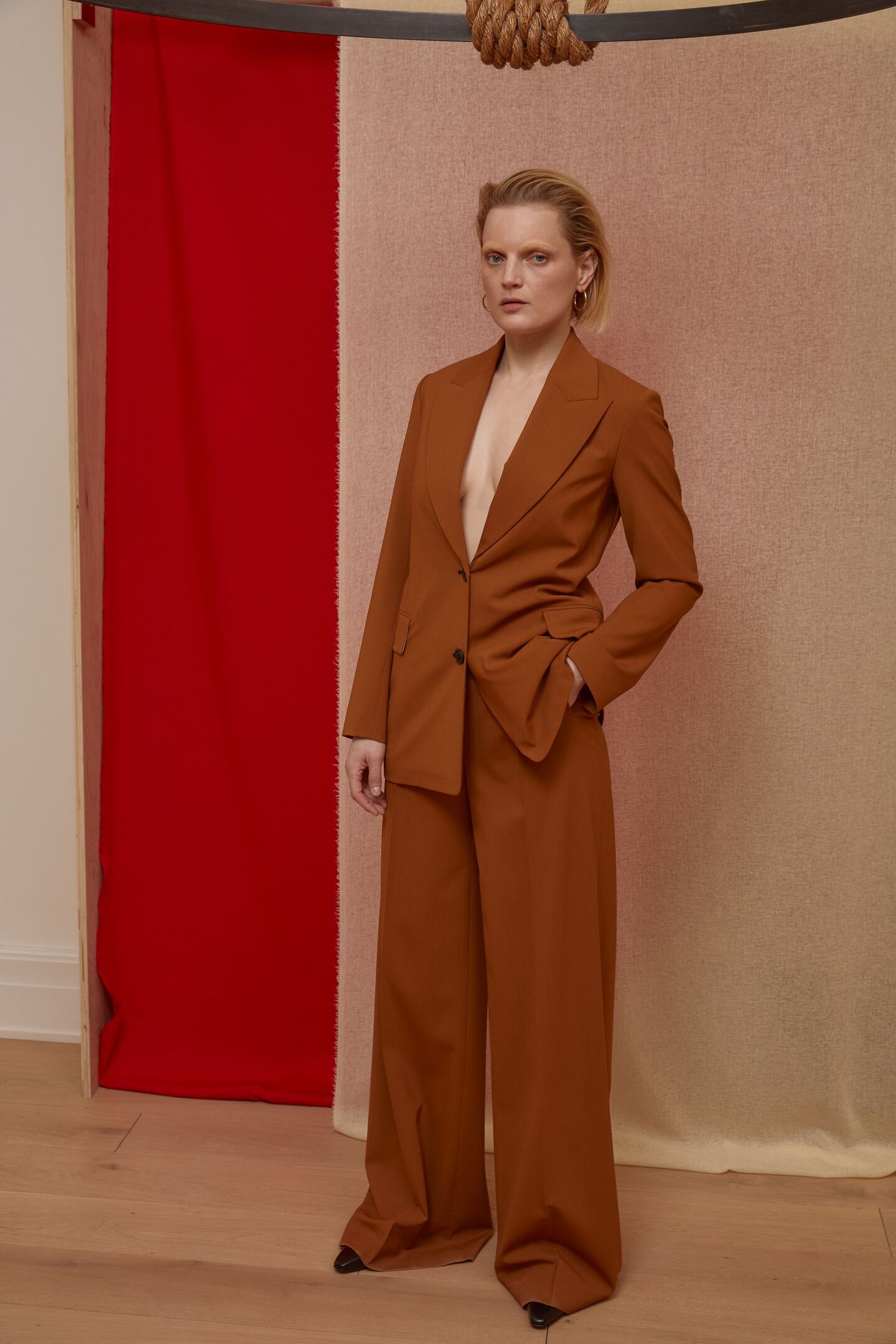
The Business of Fashion
Agenda-setting intelligence, analysis and advice for the global fashion community.

Agenda-setting intelligence, analysis and advice for the global fashion community.

NEW YORK, United States — "You know who you are at a certain point," Rosetta Getty said on Sunday morning, standing among an installation of her clothing created by the artist Analia Saban, who hung her wares from circular racks held up by hefty rope. Getty was referring to her clients and their penchant for wardrobe building, but the same could be said about the designer herself, who has managed to stay within her lane without falling flat since launching her namesake label in 2014.
Here's how she's doing it: Each season, Getty pulls out two or three pieces from her earliest collections to ensure they work with what she is making now. The attention to material — a black latex anorak lined with soft terry, rubber buttons on a fitted, almost-dress like plonge leather trench — remains, as does the relaxed, loose approach to everything from a yolked cotton caftan (belted at the waist for just a teeny bit of structure) to a gown sequined to mimic the label's signature patchwork afghan-quilt knits.
What was different for Autumn/Winter, however, was that things felt a bit further elevated, underscored by details like the sculptural drawstring pulling together a strapless column gown or the deconstructed velvet cut on a bias on an open-front apron-like slip. Perhaps it was Saban’s visual influence, perhaps Getty is just refining the key tenets of her line. Regardless, keeping to the core is good for her.
From where aspirational customers are spending to Kering’s challenges and Richemont’s fashion revival, BoF’s editor-in-chief shares key takeaways from conversations with industry insiders in London, Milan and Paris.
BoF editor-at-large Tim Blanks and Imran Amed, BoF founder and editor-in-chief, look back at the key moments of fashion month, from Seán McGirr’s debut at Alexander McQueen to Chemena Kamali’s first collection for Chloé.
Anthony Vaccarello staged a surprise show to launch a collection of gorgeously languid men’s tailoring, writes Tim Blanks.
BoF’s editors pick the best shows of the Autumn/Winter 2024 season.